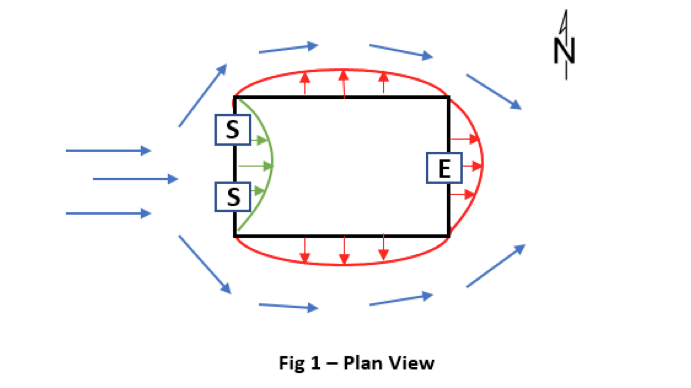Harnessing the Wind Part 2: Powered Ventilation System Design
In the second part of this article, we are going to take what we learned about wind power in Part 1 and apply it to the design of a Powered Ventilation System.
System Design
We now know that wind will create positive and negative pressure around a building. The performance of a powered ventilation system will be enhanced by locating the supply in the positive pressure area and the exhaust in negative pressure areas. For example, if we have used the NOAA wind data to determine that the prevailing wind in the summer months is from the west, then the supply should be on the west side and the exhaust on the east side of the building as shown in Figure 1.

Roof pitch and ridgeline orientation can be used to enhance a Powered Ventilation System. A steeper pitched roof will cause the wind to move faster and thus, create a greater negative pressure. Orientation of the ridgeline perpendicular to the wind direction will also increase the negative pressure on the roof surface. Incorporating both of these elements into the design of a building will enhance the function of exhaust fans that are located on the roof.
We hope that this two part article has increased your understanding of how to use wind to enhance a Powered Ventilation System. Let us know if we can help design a Powered Ventilation System that will best utilize wind power for your facility.
Prior Eldridge Articles:

